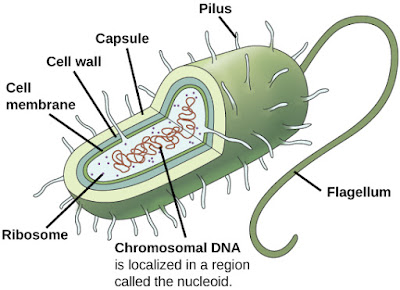The smallest structural and functional unit of an organism, which is typically microscopic and consists of cytoplasm and a nucleus enclosed in a membrane.
The concept of cell originated from the contributions of Schleiden and Schwann (1838). However, it was only after 1940, the complexities of cell structure were exposed.The cell is the smallest unit in the living organism that is capable of integrating the essential life processes. Many living things consist of vast numbers of cells working in concert with one another. A number of cells in an organism varies.
There are many unicellular organisms, e.g., bacteria and protozoans, in which the single cell performs all life functions. In higher organisms, a division of labor has evolved in which groups of cells have differentiated into specialized tissues, which in turn are grouped into organs and organ systems.
Cells consist of cytoplasm enclosed within a membrane, which contains many biomolecules such as proteins and nucleic acids.Organisms can be classified as unicellular (consisting of a single cell; including bacteria) or multicellular (including plants and animals). While the number of cells in plants and animals varies from species to species, humans contain more than 10 trillion (1012) cells. Most plant and animal cells are visible only under a microscope, with dimensions between 1 and 100 micrometers.
Cells are of two types, eukaryotic, which contain a nucleus, and prokaryotic, which do not. Prokaryotes are single-celled organisms, while eukaryotes can be either single-celled or multicellular.
Cells consist of cytoplasm enclosed within a membrane, which contains many biomolecules such as proteins and nucleic acids.Organisms can be classified as unicellular (consisting of a single cell; including bacteria) or multicellular (including plants and animals). While the number of cells in plants and animals varies from species to species, humans contain more than 10 trillion (1012) cells. Most plant and animal cells are visible only under a microscope, with dimensions between 1 and 100 micrometers.
Cells are of two types, eukaryotic, which contain a nucleus, and prokaryotic, which do not. Prokaryotes are single-celled organisms, while eukaryotes can be either single-celled or multicellular.
prokaryotic cell:
Prokaryotes are unicellular organisms that lack organelles or other internal membrane-bound structures. Therefore, they do not have a nucleus, but, instead, generally have a single chromosome: a piece of circular, double-stranded DNA located in an area of the cell called the nucleoid. Most prokaryotes have a cell wall outside the plasma membrane.
Eukaryotic Cell
Like a prokaryotic cell, a eukaryotic cell has a plasma membrane, cytoplasm, and ribosomes. However, unlike prokaryotic cells, eukaryotic cells have:
- a membrane-bound nucleus
- numerous membrane-bound organelles (including the endoplasmic reticulum, Golgi apparatus, chloroplasts, and mitochondria)
- several rod-shaped chromosomes
Because a eukaryotic cell's nucleus is surrounded by a membrane, it is often said to have a "true nucleus. " Organelles (meaning "little organ") have specialized cellular roles, just as the organs of your body have specialized roles. They allow different functions to be compartmentalized in different areas of the cell.


 0
0


